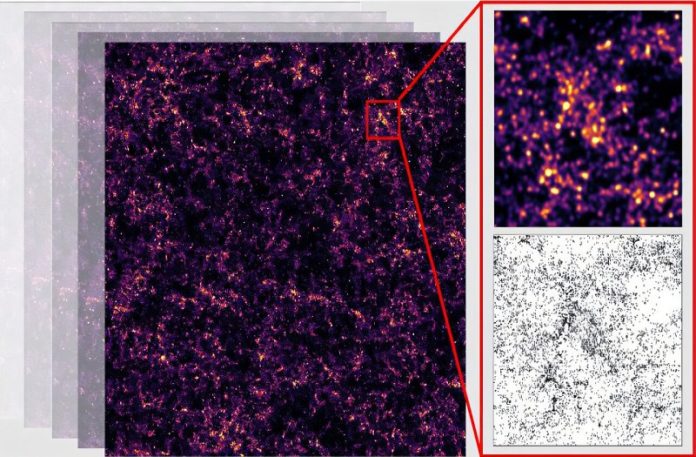
Astrophysicists are eager to explore the universe’s early stages, much like flipping through old photos to remember the past.
However, despite the incredible advancements in telescopes, current technology has limitations.
It can only look back so far into the universe’s history, leaving about 90-95% of the total volume of our 14-billion-year-old universe unseen.
Kirit Karkare, an associate scientist at the Department of Energy’s SLAC National Accelerator Laboratory and a senior member at Stanford University, explained why this broader view is essential.
“We want to measure the full volume of the universe because that gives us the best precision on cosmological physics,” Karkare said.
Understanding the universe across different times can help scientists uncover more about dark energy, dark matter, and even the events around the Big Bang.
Karkare and his team recently realized that distant, faint galaxies from the universe’s “teenage years” might be detectable using a new method.
Traditional telescopes are designed to provide detailed pictures of individual galaxies, which is useful but too narrow in focus to offer a large-scale view of multiple galaxies that existed long ago.
To address this, Karkare’s team is developing a new technique called line intensity mapping. Unlike traditional high-resolution telescopes, this method creates images with lower resolution.
While the resulting images are somewhat blurred or smudged, they can still reveal clumps of light that correspond to early galaxies.
These ancient galaxies were likely filled with dust, making them ideal for forming new stars.
This approach might not provide the same sharp details, but it contains all the essential information about cosmology and physics, just like traditional methods.
Moreover, it’s likely to be more effective in mapping the large-scale structure of the universe over vast distances.
The team’s innovative instrument is quite small—about the size of a coin—and is printed on a silicon wafer.
This new device, called the South Pole Telescope Summertime Line Intensity Mapper (SPT-SLIM), is designed to measure light with a higher level of sensitivity than ever before. The aim of SPT-SLIM is to explore the universe’s less understood middle years and piece together what happened during those times.
For the past three years, the team has been developing this silicon wafer at the University of Chicago.
Now, they’re ready to take the next step: installing the wafer inside the South Pole Telescope in Antarctica. The telescope is expected to start collecting data during Antarctica’s summer season this year.
By using SPT-SLIM, scientists hope to uncover new insights about the mysterious “teenage” phase of the universe.
This approach could provide valuable information to better understand how the universe evolved and what it looked like during its middle years, offering a fresh perspective on its history and secrets.



